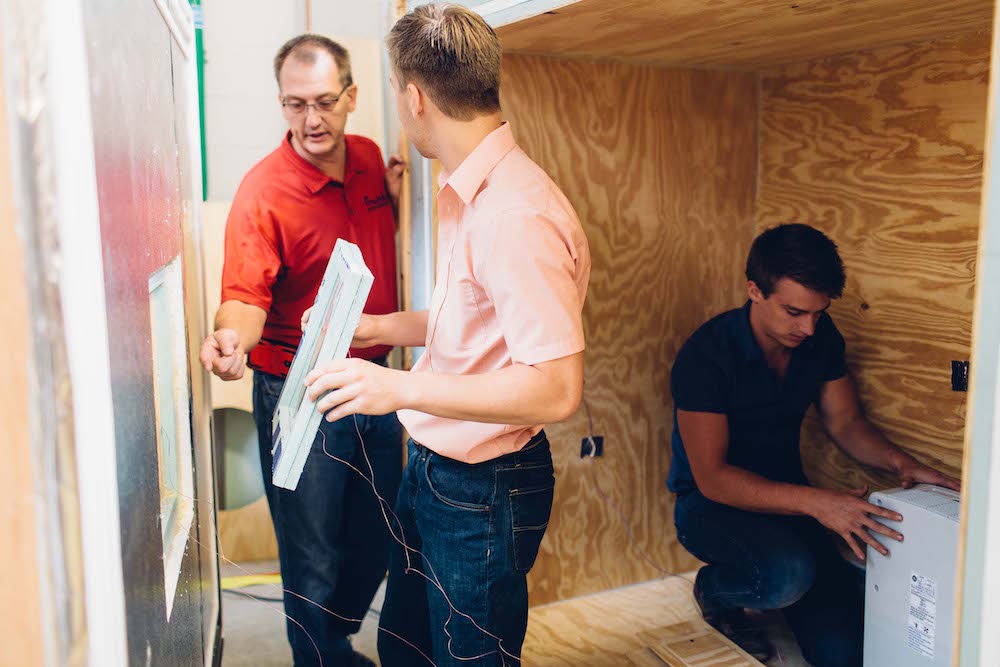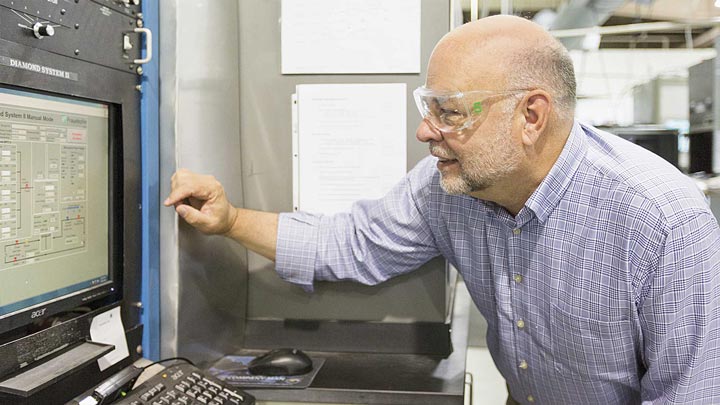Are you doing a windows project?
Modernize can pair you with three to four pros in your area, so you can compare options and save time and money.
A small window firm in Mackinac Island, Michigan, is aiming to revolutionize windows in homes all across America. Construction professionals have long known that windows were a weak point in a building’s outer envelope. While a tightly constructed, insulated wall can achieve R-values over 50, even the most efficient modern windows top out at around 4-R. According to the Department of Energy, somewhere between 25 to 50 percent of a home’s heating and cooling may be lost annually to air leaks in windows.
It’s easy to understand how cracks or gaps in the window assembly can let phantom drafts into your home—or allow conditioned air to slip outside. However, even the glass itself can be a source of heat loss. Glass usually makes for a pretty poor insulator. Unlike wood, it allows heat to pass through its surface fairly easily—and lets cold come inside, as well. But a house without any windows or openings would be pretty depressing. Therefore, the task in front of materials developers has been to design a window that will keep some of the conditioned air in—while still allowing for great views.

How Do Polymer Window Panes Stack Up to Other Thermal Window Products?
There have been plenty of attempts to make glass a better thermal insulator—you can see some of the most successful results on the market today, in the form of gas-insulated double paned windows or triple paned window glass, or Low-E glazing, meant to reflect heating and cooling back into home’s interiors.
When Mackinac Technology Company sought to develop a new solution to improve window insulation, they were hoping to design a product that would be comparable to the R-values of an insulated wall—no easy feat, since the difference between the two is so vast.
Reportedly, though, the business’s new polymer panes can boost window insulation up to an R-13. While that may not beat values for a modern wall, it’s certainly better than your average glass window, so the implications for window developers could be enormous.
How Do Polymer Window Panes Work?
Polymer window panes aren’t glass at all, but are instead made from a flexible plastic product, fitted with foam on each end. They don’t sit in a window by themselves, but rather fit over your window’s existing glass, improving their performance without requiring a new whole new set of windows.
Plastics are naturally much better insulators than glass due to their chemical makeup. In plastic products, the electrons are tightly bound together, which doesn’t allow electricity or heat to move as freely through their surface. That’s why vinyl window frames—another plastic product—are generally recommended for homes that need high thermal performance.
Find the Right Contractor for Your Windows Project
Whether you’re ready to begin your project now or need some expert advice, our network of contractors are here to help. With a few simple questions, we’ll find the best local professionals for you
Additionally, since the polymer is so flexible, it can mold and bend as the window settles—or as drafts push against window glass. The panes sit on the interior side of the home, keeping everything warm and comfortable on that side of the glass.

The Benefits of Retrofitting Windows with Energy-Saving Products
If you have leaky, single pane windows, a new set of windows can certainly reduce your home’s heating and cooling demand. By some estimates, upping your window’s efficiency with new ENERGY-STAR products can save you somewhere between $126 to $465 a year.
Unfortunately, though, new windows can sometimes be expensive, particularly if you need to replace each one in your home. In fact, if you already have double pane windows installed, your annual energy savings may not be enough to offset your investment.
That’s where a retrofit product can be so helpful. Typically, these products don’t require as much labor to install as a brand new window. While polymer window panes aren’t yet available for purchase, you can expect their costs to be somewhat lower than your average window installation. Mackinac Technology’s goal has been to lower overhead on efficiency products for windows so that they make economic sense for the average household—even if you already have pretty high-performing windows installed today. They say their product could reduce the payback period down to three to five years. Of course, if you have outdated materials, like warped wood frames or single pane glass, there’s still no substitute for a set of new, high-performance windows.
So How Can I Get Polymer Panes in My Windows?
Sadly, you’re still going to have to wait a little bit longer to get polymer window panes in your home. Don’t despair too much, however—Mackinac Technology already has a $2.5 million grant through the U.S. Department of Energy’s Advanced Research Projects Agency-Energy, and a $1.1 million contract with the U.S. Army Corps of Engineers’ Research and Development Center, so further developments should be forthcoming shortly.
For now, if you want to retrofit your existing windows, your best bet is to opt for energy-efficient window film, which lowers heat infiltration and provides some thermal protection, as well. But don’t expect a product like this to stay in R&D for too long—with the eyes of the world on building sustainable homes, innovative new technologies should come fast and furious.
Find the Right Contractor for Your Windows Project
Whether you’re ready to begin your project now or need some expert advice, our network of contractors are here to help. With a few simple questions, we’ll find the best local professionals for you
Reviews from Real Homeowners
Welcome to Homeowner Resources! We are the Modernize blog. Modernize pairs more than 3 million homeowners a year with pre-vetted contractors in their area. This blog started because we believe homeowners should know everything about their homes, from how their HVAC works to which front door colors they might love. On Homeowner Resources, you can find information on every part of your home, right down to how you can negotiate with contractors to get the best price. Here's more about the blog.
Need a contractor? Learn more about how Modernize finds the right pro for you.


